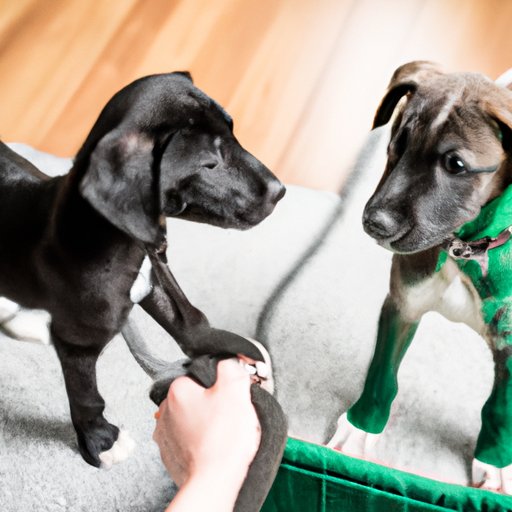Introduction
Bringing home a new puppy can be an exciting and rewarding experience, but it also requires patience and dedication. One of the most important aspects of puppy ownership is training. Proper training not only ensures your puppy behaves well, but also strengthens your bond with them and keeps them safe. In this article, we’ll discuss effective ways to train your puppy, from basic commands to socialization and everything in between.
Basic Training Commands
Teaching your puppy basic commands is essential for their safety and well-being. Commands like “sit,” “stay,” and “come” can help manage their behavior and prevent them from getting into dangerous situations. When teaching commands, it’s important to be patient and consistent.
To teach your puppy “sit,” hold a treat above their head and say “sit.” When they sit, give them the treat and say “good boy/girl.” Repeat this several times a day until they learn the command. “Stay” can be taught by saying “stay” while holding your hand in front of them. Reward them with a treat when they stay in place. Finally, “come” can be taught by calling your puppy’s name and saying “come” while backing away from them. When they reach you, give them a treat and praise.
Crate Training
Introducing your puppy to a crate can have many benefits, including aiding in potty training and providing a safe, comfortable space for your pup. It’s important to introduce the crate slowly and make it an enjoyable experience. Start by leaving the crate door open and placing treats and toys inside. Once your puppy enters the crate willingly, close the door for a short period and gradually increase the time they spend inside. Make sure the crate is large enough for your puppy to stand up, turn around, and lay down comfortably.
Positive Reinforcement
Positive reinforcement training involves rewarding your dog for their good behavior. This can be done through treats, praise, or toys. Positive reinforcement training has proven to be one of the most effective methods for teaching dogs new behaviors and reinforcing good habits. Timing and consistency are key when using positive reinforcement. Immediately reward your puppy when they exhibit good behavior, and make sure to reward them consistently every time they exhibit that behavior.
Consistency
Consistency is crucial when training your puppy. Establishing a routine, including designated times for potty breaks, playtime, and feeding, can help your puppy understand what’s expected of them. Make sure everyone in the family is on the same page and uses the same commands and rules. If you’re consistent in training your puppy, they’ll be consistent in their behavior.
Leash Training
Leash training is essential for keeping your puppy safe while out on walks. Start by attaching a leash to your puppy’s collar and allowing them to drag it around for short periods. Next, pick up the leash and walk around the house with them. Gradually increase the length of your walks and add distractions like other dogs and people. Make sure to reward your puppy with treats and praise when they walk well on the leash.
Socialization
Socialization is important for your puppy’s emotional development and well-being. Introduce them to other dogs and people, and provide opportunities for playtime. Make sure to supervise these interactions and reward good behavior. Starting socialization at a young age can prevent behavioral issues from developing down the line.
Avoiding Bad Habits
From nipping to chewing on furniture, puppies can develop some bad habits. It’s important to discourage bad behavior in a way that doesn’t hinder progress. Use positive reinforcement to discourage bad habits, and make sure to never hit or yell at your puppy. If you’re consistent in training your puppy, they’ll be more likely to break bad habits.
Conclusion
Training your puppy can be challenging, but it’s a crucial part of being a responsible pet owner. By using positive reinforcement, establishing a routine, and providing opportunities for socialization, you can ensure your puppy grows into a well-behaved, happy dog.
